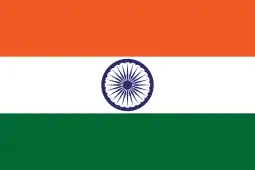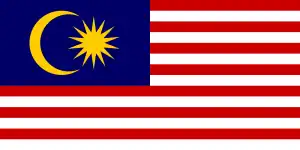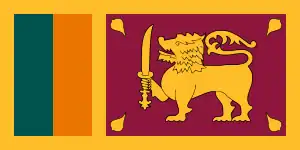| 9th G-15 summit | |
|---|---|
| Host country | Jamaica |
| Date | 10–12 February 1999 |
The 9th G-15 summit was held at Montego Bay in Jamaica on 10–12 February 1999.[1]
The summit agenda of the Group of 15 (G-15)[2] encompassed a range of issues.
The gathering brought together leaders, representatives and policymakers from non-aligned nations. African G-15 nations are Algeria, Egypt, Kenya, Nigeria, Senegal, and Zimbabwe. Those from Asia are India, Indonesia, Iran, Malaysia, and Sri Lanka. Latin American G-15 nations include Argentina, Brazil, Chile, Jamaica, Mexico, Peru and Venezuela.
Overview
The Group of 15 was established at the Ninth Non-Aligned Movement summit in Belgrade, Yugoslavia in September 1989.[3]
The G-15 is composed of countries from Africa, Asia, North America and South America. These non-aligned nations joined together to create a forum to foster cooperation and develop information which can be presented to other international groups, such as the World Trade Organization and the Group of Eight. The G-15 nations have a common goal of enhanced growth and prosperity. The group aims to encourage cooperation among developing countries in the areas of investment, trade, and technology.[3]
Leaders at the summit
Those G-15 nations represented at the summit were Algeria, Argentina, Brazil, Chile, Egypt, India, Indonesia, Iran, Jamaica, Kenya, Malaysia, Mexico, Nigeria, Peru, Senegal, Sri Lanka, Venezuela, and Zimbabwe.[4] The group's membership has expanded to 17 countries, but the name has remained unchanged.[1]
The leaders of G-15 nations are core contributors in summit meetings.[5] but only some of the heads-of-state were at the Caracas event:
 India - Atal Behari Vajpayee, Prime Minister[1]
India - Atal Behari Vajpayee, Prime Minister[1] Jamaica[1] - Percival James Patterson, Prime Minister
Jamaica[1] - Percival James Patterson, Prime Minister Malaysia - Mahathir Mohamad, Prime Minister[1]
Malaysia - Mahathir Mohamad, Prime Minister[1] Nigeria[1] - Abdulsalami Abubakar, President
Nigeria[1] - Abdulsalami Abubakar, President Senegal[1] - Abdou Diouf, President
Senegal[1] - Abdou Diouf, President Sri Lanka,[1] Sirimavo Ratwatte Dias Bandaranaike, Prime Minister
Sri Lanka,[1] Sirimavo Ratwatte Dias Bandaranaike, Prime Minister.svg.png.webp) Venezuela[1] - Hugo Chávez, President.
Venezuela[1] - Hugo Chávez, President. Zimbabwe[1] - Robert Gabriel Mugabe, President
Zimbabwe[1] - Robert Gabriel Mugabe, President
Priorities
The G-15 nations perceive an ongoing need to expand dialogue with the G8 nations. The G-15 want to help bridge the gap between developing countries and the more developed and industrialized nations.[3]
Issues
G-15 nations are united by shared perceptions of global economic issues; and the G-15 provides a structure for developing common strategies for dealing with these issues.[6]
G15 nations have joined together in hopes of escaping from the more polemical atmosphere in other multinational groups and organizations, such as the Group of 77 (G-77).[6]
Within the G-15, Argentina, Brazil and Mexico did not support the confrontationist posture which was adopted by Malaysia.[1]
Notes
- 1 2 3 4 5 6 7 8 9 10 11 Muralidharan, Sukumar. "Elusive Consensus," Frontline (India). Vol. 16, No. 05, 27 February 1999; retrieved 2011-08-25
- ↑ The official website Archived 12 September 2017 at the Wayback Machine adopts the "G-15" orthography (with a hyphen) in order to distinguish an abbreviated reference to this group in contrast with other similarly named entities.
- 1 2 3 Prematillake, Tharindu. "Lanka Heads Powerful G-15 Serving Collective Interests," Archived 28 May 2010 at the Wayback Machine The Nation (Colombo). 22 May 2010.
- ↑ Afrasiabi, Kaveh L. "Cool G-15 heads take the heat," Asia Times (Hong Kong). 15 May 2010; retrieved 2011-08-26
- ↑ Rieffel, Lex. "Regional Voices in Global Governance: Looking to 2010 (Part IV)," Archived 3 June 2010 at the Wayback Machine Brookings. 27 March 2009.
- 1 2 Chauhan, Sandeep (1997). Demand for New International Economic Order. M.D. Publications. p. 129. ISBN 9788175330276. Retrieved 30 March 2019.
References
- Chauhan, Sandeep. (1997). Demand for New International Economic Order. New Delhi: MD Publications. ISBN 9788175330276; OCLC 222017407